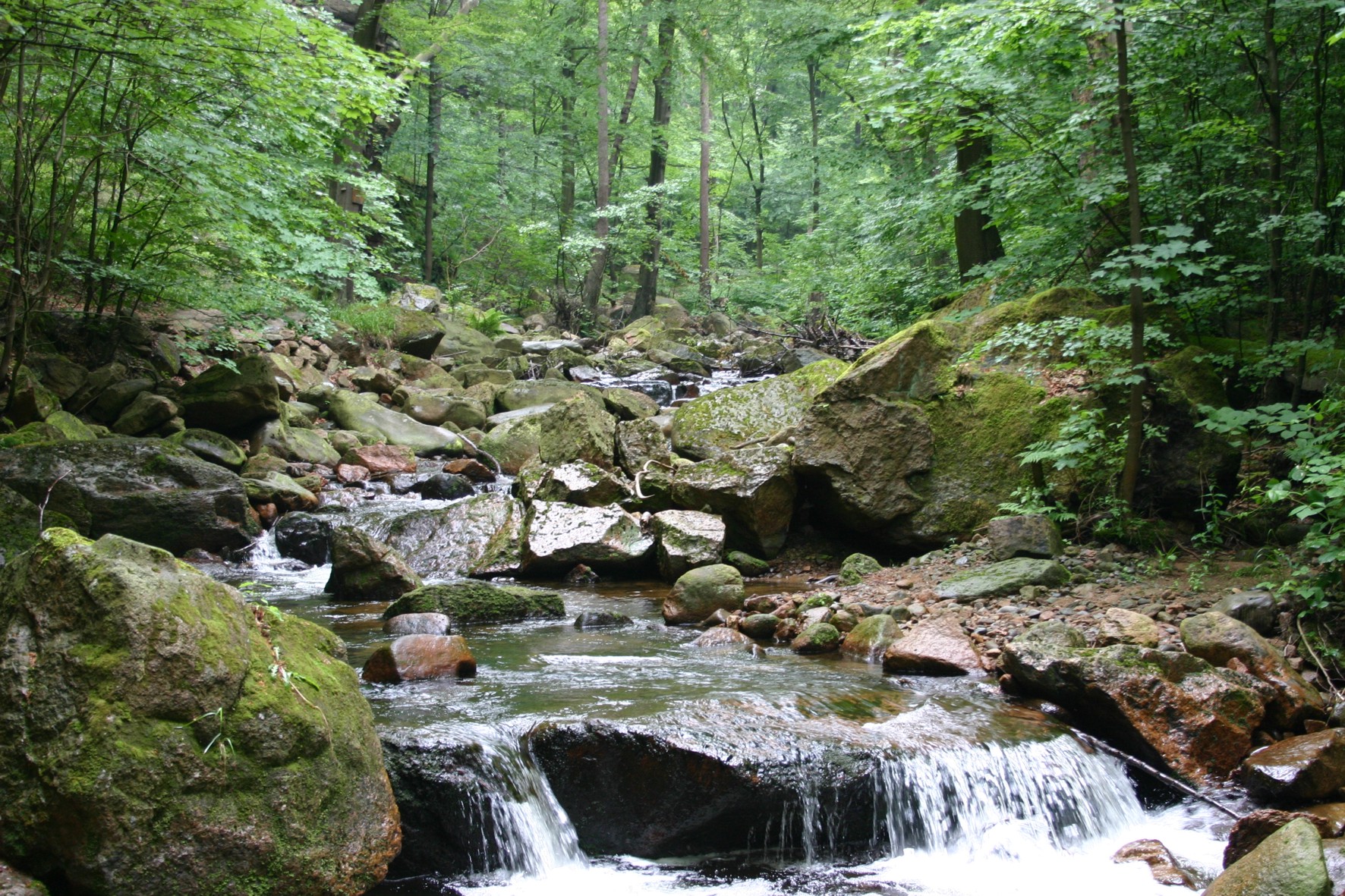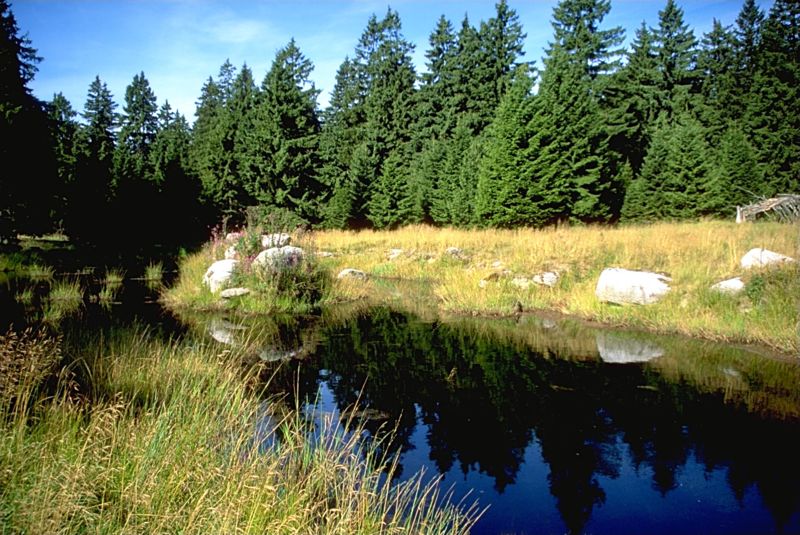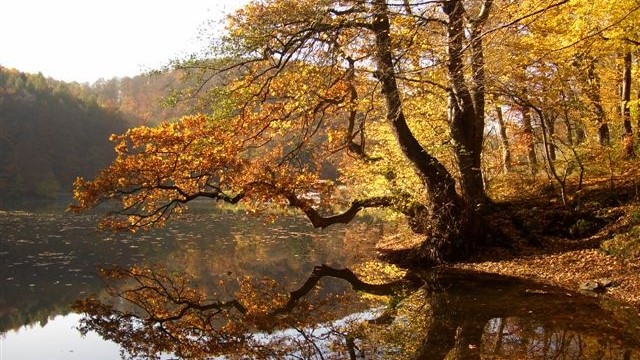Harz National Park is a nature reserve in the German federal states of Lower Saxony and Saxony-Anhalt. It comprises large portions of the western Harz mountain range, extending from Herzberg and Bad Lauterberg at the southern edge to Bad Harzburg and Ilsenburg on the northern slopes. 95% of the area is covered with forests, mainly with spruce and beech woods, including several bogs, granite rocks and creeks. The park is part of the Natura 2000 network of the European Union.
In its current form, the park was created on January 1, 2006 by the merger of the Harz National Park in Lower Saxony, established in 1994, and the Upper Harz National Park in Saxony-Anhalt, established in 1990. As the former inner German border ran through the Harz, large parts of the range were prohibited areas, that apart from the fortifications had remained completely unaffected for decades. Today the park covers parts of the districts of Goslar, Osterode and Harz.
Rare animals of the Harz National Park include the dipper, the black stork, peregrine falcon, the European wildcat and especially the Eurasian lynx. The last lynx in the Harz Mountains had been shot in 1818, but in 1999 a project for reintroducing was established. Since 2002 several wild lynxes gave birth. An attempt to return the capercaillie (Auerhuhn) however did not succeed.
History
The present, pan-state Nationalpark Harz was formed on 1 January 2006 from the merger of the old park of the same name in Lower Saxony and the High Harz National Park (Nationalpark Hochharz) in Saxony-Anhalt. Since the merger the head of this major nature conservation area has been Andreas Pusch.
The Upper Harz National Park was established as part of GDR's national park programme on 1 October 1990, two days before the reunification of Germany, on the basis of a ministerial decision by the East German government. The park included large parts of the eastern Harz, roughly from the Ecker Dam and the national park municipality of Ilsenburg in the north and Schierke in the south as well as the Brocken. The region is characterised by a relatively undisturbed plant and animal environment, which is mainly due to its location immediately next to the old Inner German Border. In the German Democratic Republic era, the Brocken was accessible until 1961 with an easily obtained pass. From 13 August 1961 it became an out-of-bounds area, which meant that tourists could no longer visit it. In the mid-1980s the first problems appeared in the Harz, such as bark beetle and fungal infestation. In the wake of the spirit of optimism during the time around reunification it was exactly this that gave impetus for the establishment of the national park. On 1 January 1991 a national park headquarters in Wernigerode was set up under the leadership of Hubertus Hlawatsch. Hlawatsch's successor was Peter Gaffert, who ran the eastern park from 1995 until its merger with the Harz National Park in the western Harz on 1 January 2006.
The Lower Saxon part of the park was opened on 1 January 1994 after four years of preparation. Its founding father was Dr. Wolf-Eberhard Barth. Although a combined national park project was discussed soon after reunification by both states it was another twelve years before the parks were merged.
The Harz National Park belongs to the European umbrella organisation EUROPARC Federation, a federation of national parks, biosphere reserves and nature parks. It concerns itself inter alia with the exchange of information, ustausch, advanced education and public relations. The German section, EUROPARC Deutschland, of this umbrella organisation has also organised the merger of many large conservation areas in Germany.
In 2005 the national park was included in the European Charter for Sustainable Tourism in Protected Areas.
Currently the national park employs 188 staff, of which 59 work in the national park head office in Wernigerode or its outpost in Sankt Andreasberg OT Oderhaus. The 40 employees of the national park warden service, who are also known as rangers, conduct guided tours and look after tasks in connexion with environmental training, include the maintenance of information posts and national park buildings.
Zoning
The Harz National Park is recognised by the IUCN (World Conservation Union) as a national park (a Category II protected area in the IUCN system). To achieve that, according to the rules, at least 75 per cent of the area must be set aside as a natural biodiversity zone (core zone). In this zone nature must be left completely to itself. If this proportion is not achieved the region can be classified as a so-called developing national park, if it is assessed as fulfilling these conditions within 30 years.
The Harz National Park counts as a developing national park. Currently 41 per cent of the area of the park is designated as a natural biodiversity zone. The aim is to cross the 75 per cent threshold by 2020.
58 per cent of the park area is currently still a nature development zone. Here measures in lines with the forest development concept are carried out. The aim is to transfer the largest possible area of this natural development zone into the natural biodiversity zone.
A proportion of the park counts as a utilisation zone. This covers areas that are important for tourism or are historico-culturally significant, such as the Brocken summit or mountain meadows. Here conservation measures will also be applied in future.
Furthermore within a 500 metre wide strip on the edge of the national park, measures are being put into effect that will protect the adjacent areas.












